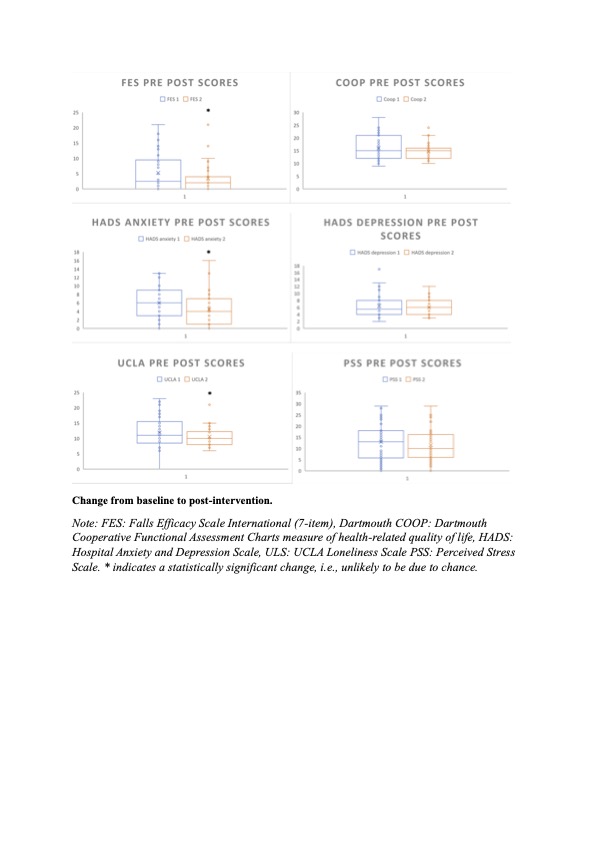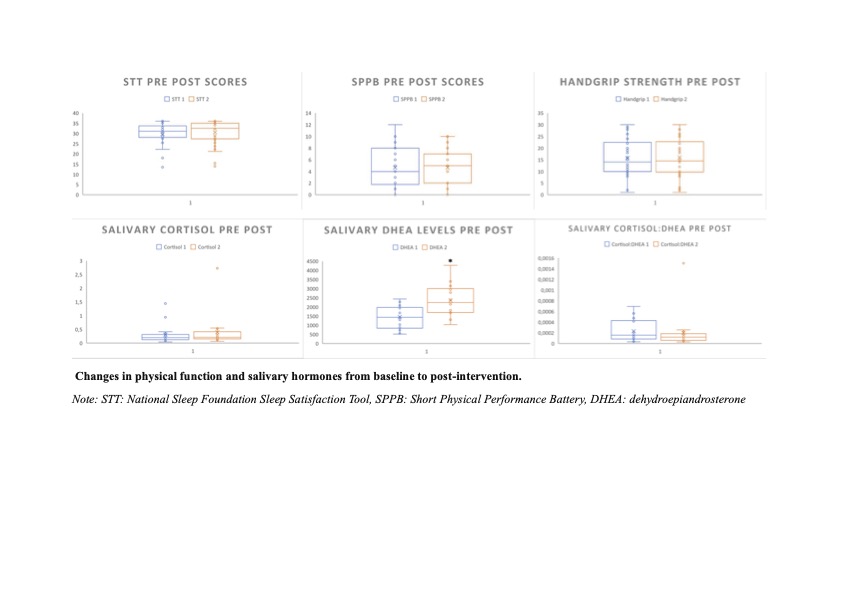We are pleased to share insights and outcomes from our pilot project exploring the impacts of a digital Physical Activity (PA) intervention (www.dancesingcare.uk) on the holistic wellbeing of older adults in care homes. Recognising the potent influence of PA on physical, psychological, and social health trajectories amidst the rising demand for care homes globally, our team has been meticulously exploring, analysing, and adjusting strategies to cater to this crucial aspect of care.
Below is a report on our recently completed pilot study, ahead of the peer-reviewed research paper. If any supplementary data are needed, please get in touch with Anna C. Whittaker a.c.whittaker@stir.ac.uk .
1. Project Background and Context
Confronted by the challenges often experienced by older adults in care home environments, such as restricted mobility and potentially social isolation, our initiative zeroed in on leveraging technology to enhance PA levels within these institutional contexts. An initial feasibility study showcased the potential benefits of danceSing Care’s digital music and movement programme (https://doi.org/10.1186/s12877-023-03794-5).
Consequently, these preliminary findings and constructive feedback propelled us towards a carefully devised Pilot Randomised Controlled Trial (RCT) to evaluate a 12-week digital music and movement programme’s impact on health markers among older adults in care homes.
2. Implementing the Programme
Our 12-week programme, executed in Holmes Care Group care homes in Scotland, sought to incorporate ethical and rigorous research practices, ensuring participant comprehension and consent. The exercises and sessions were curated with a mindful approach towards accessibility, flexibility, and consideration for participants’ varying abilities and preferences.
How It Worked:
- Upon enrollment, participants were randomly assigned to either commence the programme or be placed on a waiting list using advanced Randomization Allocation Software.
- Sessions were designed to be low-to-moderate intensity and curated, considering dementia-friendly and age-appropriate content.
- Activity coordinators were trained by danceSing Care programme instructors, ensuring standardised, safe, and effective session delivery.
Quantitative analyses using IBM SPSS Statistics and thematic qualitative analyses (interviews) offered a rich understanding of both quantitative and qualitative effects on participants’ lives.
Key Challenge
Randomisation Difficulties: A control group (waitlisted for the programme) was intended. However, as the interventions took place in the communal living rooms where the waitlist-control group was also present, this group (initially 17 participants) also received the intervention simultaneously.
3. Illuminating Outcomes
Encouragingly, the participants (34 included at the start) showcased noticeable improvements in various wellness markers. Emotional and psychological benefits included uplifted moods and decreased anxiety and loneliness symptoms. The enhancement of social interactions and increased physical wellness with no significant adverse events were additional promising outcomes. The benefits extended to reducing the fear of falling and enhancing quality of life, underlining the potential relationship between programme adherence and improved living quality.
Emotional and Psychological Benefits:
- A noticeable improvement in mood, a decrease in anxiety symptoms and fear of falling, and an alleviation of loneliness were observed among the participants.
- A participant said: “I think I am getting a little bit stronger. The fear is going away, and I want to try things”. This highlights a boost in self-confidence and reduced fear, potentially linked to falling risk.
Social Enhancement:
- The activities encouraged socialisation, allowing residents to interact, laugh, and build connections.
- There was a noticeable uplift in the overall atmosphere within the care home, with residents appearing “happier” and more “upbeat”.
- Participants demonstrated appreciation for the social aspect of the intervention, enjoying the collective experience and the sense of community it fostered. Music was a particular highlight, evoking positive emotions and memories.
Physical Uplift:
- Some residents felt physically stronger and more willing to engage in different activities.
- The intervention led to increased salivary DHEA levels, which is vital as high DHEA is often associated with improved immune function and a reduced risk of chronic diseases, as well as better muscle growth and strength.
- Notably, no significant adverse events or safety issues were reported throughout the study.
Activity Coordinators’ Perspective:
- Coordinators observed tangible improvements in the residents’ demeanours and emotional states.
- They witnessed an enhancement in social interactions and participants developing a more positive outlook, especially in residents prone to overthinking or experiencing depressive symptoms.


4. Discussion of Findings
Findings highlighted a significant increase in salivary DHEA levels (vital as high DHEA is often associated with improved immune function and a reduced risk of chronic diseases) and a decline in fear of falling, anxiety and loneliness amongst participants, thus illustrating the potential efficacy of digital PA interventions in care home settings for influencing important aspects of wellbeing. Challenges, such as scheduling conflicts, staffing, and technological issues, were encountered and recognised as areas for future refinement. Nonetheless, the importance of the perceived benefits of PA, particularly the positive impacts on mental wellbeing and the enhanced sense of community, was glaringly apparent.
Challenges and Considerations
| Implementation Hurdles | Execution was challenged by factors like scheduling conflicts, staffing issues, and technological barriers like unreliable Wi-Fi. |
| Methodological Limitations | Some limitations in the study’s findings and analysis arose due to control group non-adherence and lower-than-expected recruitment rates. |
| Intensity and Tailoring of PA | Although the PA program was not robustly impactful on physical functions and frailty markers, feedback about feeling “stronger” prompts a discussion about the importance of the perceived benefits and the potential need for higher-intensity, more personalised interventions in the future. |
5. The Path Ahead
Despite encountering challenges in implementation and methodological limitations, the potent impacts of music and dance on emotional wellbeing and social interaction cannot be understated. We are dedicated to enhancing and refining our approach to ensure interventions are integrated seamlessly into regular care home schedules, adhering closely to prescribed protocols and tailoring interventions to individual needs. A structured, strategic outlook focusing on personalisation, addressing logistical challenges, ensuring enthusiastic staff involvement, and incorporating a longer-term view will inform our future strategies and research.
Strategic insights for future implementation
| Addressing Logistical Challenges | Identifying and mitigating logistical and operational challenges, like schedule adherence and technical requirements, is crucial for seamlessly implementing interventions in care home settings. |
| Staff involvement | Staff are pivotal in managing and steering interventions; thus, their training, support, and enthusiastic involvement are vital for the program’s success. |
| Personalisation | Given the variance in response and benefit, a strategy focusing on individualised, person-centred approaches might enhance both engagement and outcomes. |
| Long-term View | Future studies may extend the observation period to deepen insights into the sustainability and longitudinal impacts of the intervention as well as whether significant changes in physical function might be observed over longer durations. |
6. Conclusion Our journey through the digital PA intervention has revealed both the considerable potential and areas for further refinement and enhancement. As we steer towards a full-scale RCT, the recommendations from this pilot programme will guide our refined approach, ensuring our strategies are pragmatic, actionable and robustly designed to ensure we leave no stone unturned in enhancing resident wellness through informed data-driven strategies.